In New York City, the cultural capital of the United States, there stands a complex that is dedicated to the finest in the world of music and the arts… Lincoln Center.

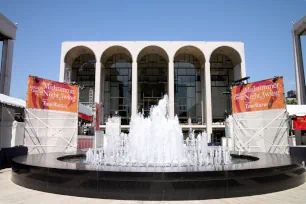
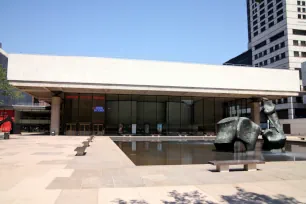

Lincoln Center for the Performing Arts is more than just one building. It’s an entire area – 16.3 acres (6.6 hectares) in all – devoted to music, dance, and theater. It is home to twelve institutions, including the Metropolitan Opera, the Lincoln Center Theater, the New York Philharmonic and the New York City Ballet. Literally thousands of concerts and performances happen here each year, making it one of New York’s most visited venues.
Origin
In 1959 construction started on a grand complex that was to concentrate several cultural institutions that were spread out over the city. The initiative for the complex was taken in 1950 by the Metropolitan Opera and the New York Philharmonic, which were both looking for new accommodation. They founded the Lincoln Center Corporation, presided by John D. Rockefeller III. The location chosen for the new complex was a rundown area of tenements west of Central Park, a neighborhood featured in the famous musical ‘West Side Story’.
The complex was built in a Robert Moses led era that neglected the city’s urban fabric. As a result, the complex was built as some kind of cultural island, turning its back to the rest of the city. Visitors from the suburbs were now able to visit a theater in New York without ever setting foot in the city’s crowded neighborhoods, something that only further spurred the urban exodus. In spite of this now outdated concept, Lincoln Center can be considered a success, not just thanks to the fine reputation of the institutions housed here but also thanks to the nicely laid out public areas decorated with fountains as well as the proximity to public transportation.
The first building opening its doors was the Philharmonic Hall (1962), now the Avery Fisher Hall. The original concept of Lincoln Center was completed in 1976 with the opening of the Alice Tully Hall. But in the following decades, even more buildings were added to the complex.
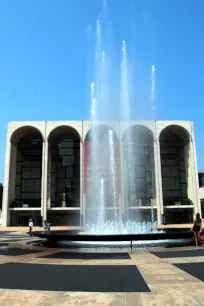
The Metropolitan Opera
The grand building that houses New York City’s Metropolitan Opera is the most spectacular of all Lincoln Center buildings, and it ranks among the most beautiful performance venues in the United States. It was designed by the American architect Wallace K. Harrison and opened in 1966. With red-carpeted spiral staircases, huge chandeliers, elegant box seats, and all the amenities needed to make your opera experience first-class, the Metropolitan Opera performs some of the world’s most well-known operas each season (as well as a number of premieres).
Avery Fisher Hall
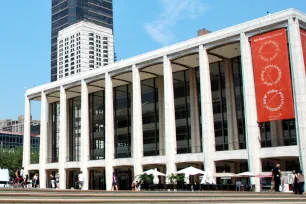
The modern Avery Fisher Hall, designed by Max Abramovitz, is home to the New York Philharmonic, one of America’s finest symphony orchestras. In 1976 acoustic problems triggered a redesign of the interior by Philip Johnson. Originally named Philharmonic Hall, it was built in 1962 and renamed in 1973 in honor of Avery Fisher, who made a sizeable donation to the orchestra. This beautiful space accommodates more than 2,700 concert-goers.
New York State Theater
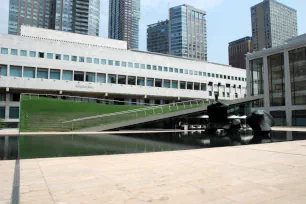

Home to both the highly-acclaimed New York City Ballet and the New York City Opera (not to be confused with the Metropolitan Opera), the New York State Theater is similar in design to Avery Fisher Hall. It is constructed in the traditional proscenium style and seats 2,755 guests. The front of the theater is glass, and at night, the waters of the Lincoln Center fountain reflect off the expansive windows.
The Juilliard School
One of the most famous music conservatory in the world, the Juilliard School of Music, is also located at the Lincoln Center complex. Established in 1905 and relocated to Lincoln Center in 1968, the Juilliard School has graduated some of the world’s finest musicians, dancers, and actors. Its student body is drawn from nearly all fifty states and just as many foreign countries.

Alice Tully Hall
The Chamber Music Society of Lincoln Center is housed in the Alice Tully Hall. The hall is located in the same building as the Juilliard School, originally designed by Pietro Belluschi and Eduardo Catalano. The structure was an example of a building that was not particularly well integrated with its urban surroundings. Fortunately, a spectacular renovation of the Alice Tully Hall in 2009 by Diller Scofidio + Renfro completely opened up the building towards the street. It looks like the building was cut in two by a glass shard, giving it a much more open appearance.
Other Arts Companies
Lincoln Center is also home to the Film Society of Lincoln Center, the School of American Ballet, and the not-for-profit Lincoln Center Theater which is housed in the 1965 Vivian Beaumont Theater designed by Eero Saarinen.

The New York Public Library for the Performing Arts – now known as the Dorothy and Lewis B. Cullman Center – is also located on the premises.
Tours
An array of tours is offered to both individuals and groups who are visiting Lincoln Center, including opportunities to explore the backstage areas of the various venues. Guests can even arrange a private Meet-the-Artist performance and conversation with dancers, singers, and musicians or combine their Lincoln Center tour with trips to other New York City sites.
- Next: City Hall
- More Sights & Attractions in New York

